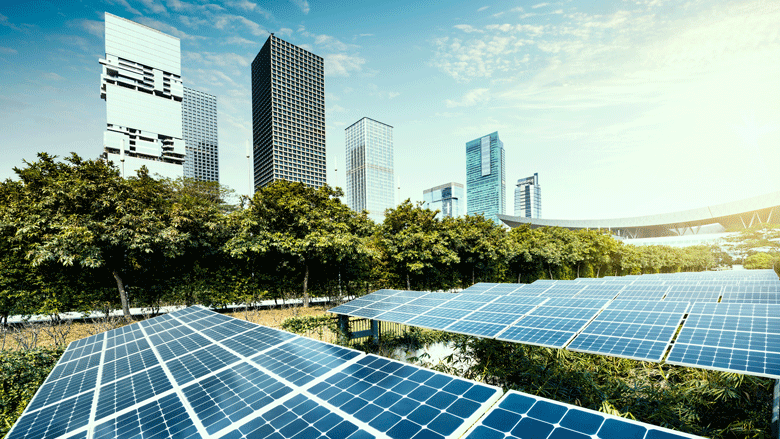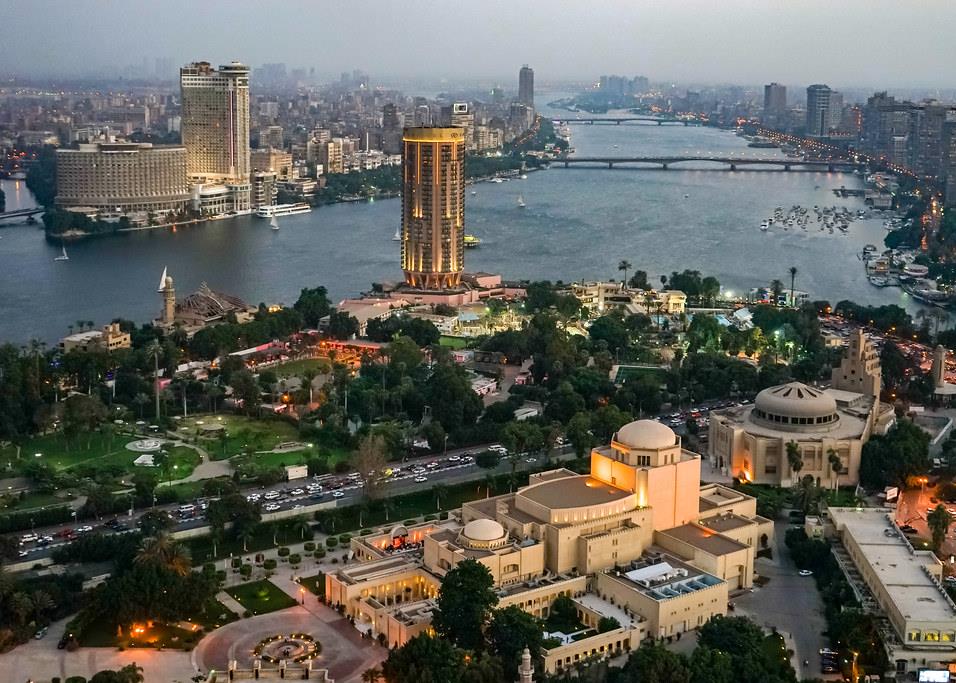

| By Steven Griffiths, senior vice-president (R&D) and professor of practice, Khalifa University of Science and Technology |
Urbanisation or the aggregation of people in and around cities is a megatrend that will continue to be at the heart of global economic growth throughout the remainder of the 21st century.
Although there is no single agreed definition of a city, it is essentially a settlement of more than a few thou- sand people who live, work and socialise together. Cities today occupy only about 2-3 per cent of the earth’s surface, but are home to about 55 per cent of the world’s population.
Globally, they generate approximately 80 per cent of economic output, consume 66 per cent of energy and generate more than 70 per cent of all carbon emissions. It is expected that by 2050, nearly 70 per cent of the global population will live in cities. This means the way they are powered will essentially determine how we power our world.
Shifting approach
Methods of energy production depend on geography, infrastructure and regulatory context. Nonetheless, the trend is towards clean and sustainable supplies. By 2050, the majority of global demand for electricity is expected to be met by renewable sources.
 The more optimistic scenarios, such as Bloomberg New Energy Finance’s New Energy Outlook 2018, project that by 2050, the renewable energy technology momentum will result in more than 70 per cent of total electricity coming from clean sources, with 50 per cent or more of this supplied by solar and wind energy.
The more optimistic scenarios, such as Bloomberg New Energy Finance’s New Energy Outlook 2018, project that by 2050, the renewable energy technology momentum will result in more than 70 per cent of total electricity coming from clean sources, with 50 per cent or more of this supplied by solar and wind energy.
With cities being the major consumers of global electricity, one would expect from such projections that they would be advancing rapidly in the adoption of renewable energy. Data from CDP (formerly the Carbon Disclosure Project) suggests that this is the case, with at least 100 cities worldwide sourcing 70 per cent or more of their electricity from renewables, and nearly 200 with solar or wind energy present in their mix.
Additionally, a 2017 study by C40 Cities Climate Leadership Group (C40) and McKinsey outlines the means by which nearly any city, regardless of size, population density and wealth, can achieve a 70-90 per cent share of zero-carbon electricity in its overall electricity supply.
Intermittent supply
Although such trends and perspectives are promising, benefiting from zero-carbon electricity, particularly when derived from intermittent wind and solar resources, will require technologies and operational practices that overcome the inherent limitations imposed by intermittency.
This is a system-level challenge that is context-depend- ent and requires both temporal and spatial considerations to achieve adequate system flexibility. Here, flexibility refers to the ability of a power system to respond to the simultaneous variability of electricity supply and electricity demand.
Although many conurbations are dependent on electricity supplied by utilities, authorities have a critical role to play in aligning with energy companies to enable the broad deployment of both centralised and distributed renewable energy sources.
In essence, cities must work constructively with utilities and government authorities in building the policy and regulatory frameworks that will allow for efficient and effective electricity systems to evolve and benefit inhabitants.
Key areas of coordination are the setting of targets and incentives for centralised and distributed renewable energy generation as well as encouraging the adoption of technologies and operational approaches that provide power system firmness and flexibility.
Positive change
At the global level, cities such as Reyjkavik in Iceland and Basel in Switzerland are already obtaining 100 per cent of their electricity from renewable energy due to excellent local hydropower resources.
A large number of other cities are adopting a more diverse power supply. For instance, 25 of the C40 member cities have established goals to reach net-zero emissions by 2050, through improved energy efficiency and increased use of renewables in urban buildings. These cities are geographically dispersed throughout North America, South America, Europe, Africa and Australia.
In the Middle East, cities historically powered almost entirely by fossil fuels are starting to shift towards alternative sources. At least 10 per cent of the electricity generation capacity in the GCC countries, where urbanisation is approximately 85 per cent, will be met by renewable energy if national targets are realised.
This is significant, given that the share of renewable electricity capacity in GCC nation stands at less than 1 per cent today.
Renewables ambition
Among the GCC countries, the UAE and Saudi Arabia have the greatest ambition for clean energy. Though Saudi Arabia’s renewable targets have been in flux lately, the UAE is still hoping to meet its 2017 target of 44 per cent of electricity from alternative sources by 2050.
According to the International Renewable Energy Agency’s (Irena’s) 2019 Renewable Energy Market Analysis, by 2030 the UAE’s predominantly urban population may be obtaining electricity from a generation mix that includes as much as 6GW of concentrated solar power (CSP), 18.9GW of utility-scale solar photovoltaics (PV), 4.2GW of rooftop solar PV, 300MW of wind energy and 600MW of waste-to-energy.
This potential deployment of rooftop solar PV is by far the highest in the GCC and is based on the emirate of Dubai’s target of 25 per cent of power coming from renewable energy, with rooftop solar PV on all of the emirate’s buildings by 2030.
Dubai’s ambition to increase distributed rooftop solar PV is only possible with an enabling set of government policies and regulations. Particularly important is the emirate’s net metering policy, which allows residents to offset their electricity bills through consumption of solar energy and carry forward credit for any generated solar energy that is not consumed in a given billing cycle.
Price incentives
In Dubai, The Sustainable City (TSC) by Diamond Developers is demonstrating, on a small scale, the opportunity for distributed solar energy in the UAE. The 0.5 square-kilometre development is expected to become the region’s first net-zero energy community and in its current phase has deployed 6.4MW of solar PV for its 2,800 residents at a cost that is less than the prevailing electricity tariff for Dubai expats.
 Dubai has at least three other sustainable cities planned, while Abu Dhabi is already home to Masdar City, the Middle East’s first sustainable city and an early adopter of renewable energy.
Dubai has at least three other sustainable cities planned, while Abu Dhabi is already home to Masdar City, the Middle East’s first sustainable city and an early adopter of renewable energy.
Looking ahead, it is clear that cities of the future will be increasingly powered by clean energy. Although differences in local circumstances will lead to different patterns of adoption, the global electricity system is shifting towards renewable energy that is distributed, digitally enabled and integrated across end-use sectors.
Following Dubai, the emirate of Abu Dhabi has also initiated a net metering policy. The success of net metering in the UAE depends on the cost of electricity generation from rooftop solar PV being less than the cost of using the power grid.
The UAE energy policy is making this possible through ongoing electricity subsidy reforms that complement rapid reductions in solar technology costs.
Even GCC cities, which have historically been powered by fossil fuels, will increasingly move towards renewables, sim- ply because they are becoming the most efficient and effective source of electricity for highly urbanised landscapes.
Steven Griffiths is the senior vice-president (R&D) and professor of practice at Khalifa University of Science and Technology
 This article is extracted from a report produced by MEED and Mashreq titled Building Future Cities. Click here to download the report
This article is extracted from a report produced by MEED and Mashreq titled Building Future Cities. Click here to download the report
To know more about the MEED Mashreq Partnership, get in touch with us at MEEDMashreqPartnership@meed.com or find more info on www.meedmashreqindustryinsight.com
You might also like...

Red Sea Global awards Marina hotel infrastructure
18 April 2024

Aramco allows more time for MGS package revised prices
18 April 2024

Morocco tenders high-speed rail project
18 April 2024
A MEED Subscription...
Subscribe or upgrade your current MEED.com package to support your strategic planning with the MENA region’s best source of business information. Proceed to our online shop below to find out more about the features in each package.






